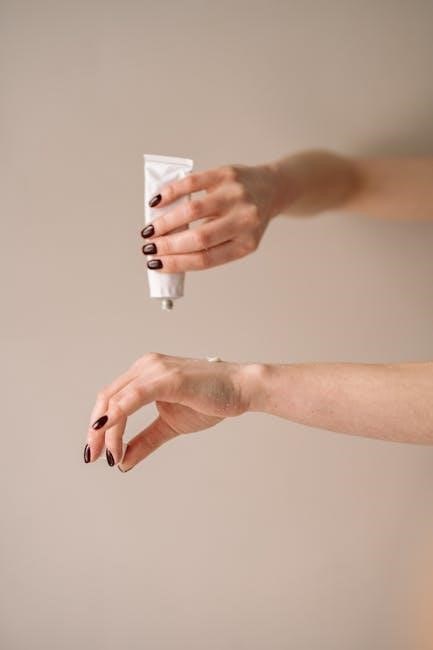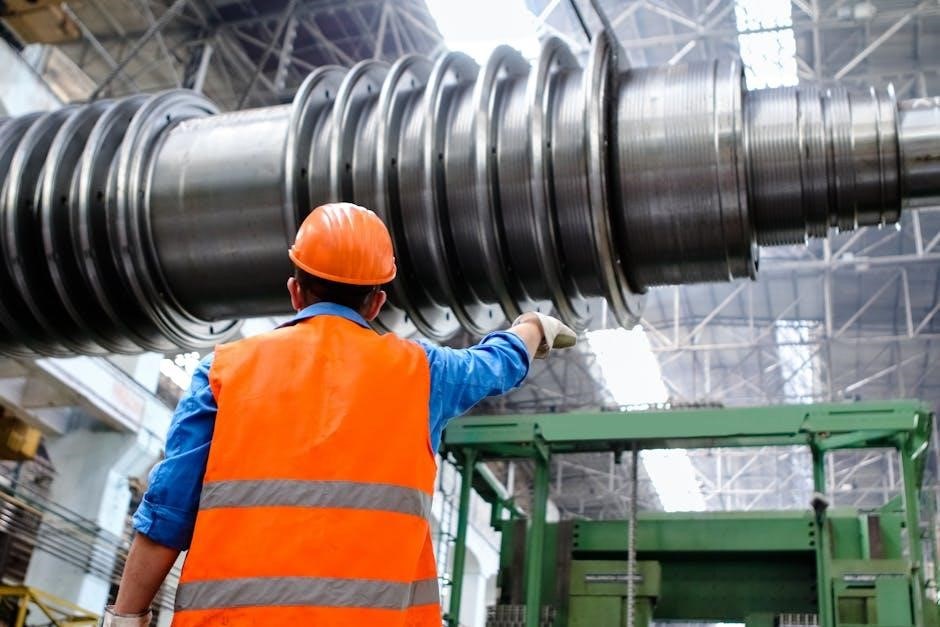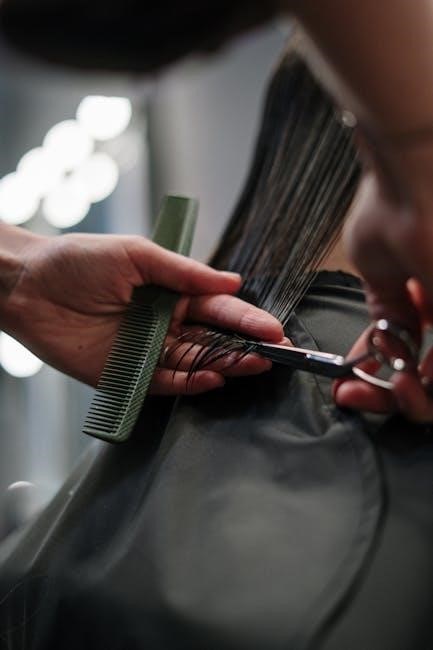steerer tube cutting guide
Cutting a steerer tube is a critical step in bicycle maintenance and customization․ Whether you’re installing a new fork or adjusting your bike’s fit, precise cutting ensures proper alignment and functionality․ An accurately cut steerer tube guarantees optimal handling, safety, and performance․ However, this task requires careful planning and the right tools to avoid costly mistakes․ This guide will walk you through the process, emphasizing the importance of accuracy and providing tips for achieving a clean, straight cut․ By following these steps, you’ll ensure your bike operates smoothly and maintain its value for years to come․ Cutting a steerer tube isn’t just about trimming excess material—it’s about precision and attention to detail․

Importance of Proper Cutting

Properly cutting a steerer tube is a task that demands attention to detail and precision․ While it may seem like a straightforward process, the consequences of improper cutting can be significant, affecting both the performance and safety of your bicycle․ A poorly cut steerer tube can lead to a variety of issues, including misalignment, uneven stress distribution, and even structural weakness, which can compromise the integrity of the fork and handlebar setup․
One of the most critical reasons for precise cutting is to ensure proper fitment of the stem and handlebars․ If the steerer tube is cut too short, it may not provide enough stability for the stem, leading to a loose or wobbly connection․ Conversely, if the tube is left too long, it can create an uneven surface for the stem’s clamping area, causing improper alignment and potentially leading to handlebars that are not level․ This misalignment can affect the bike’s handling, making it more difficult to control, especially at higher speeds or during sharp turns․
Another key aspect of proper cutting is maintaining the structural integrity of the steerer tube․ When cutting, it’s essential to avoid creating uneven or jagged edges, as these can weaken the tube and create stress points that may lead to failure over time․ A clean, straight cut ensures that the tube remains strong and durable, even under the repeated stress of riding․ This is particularly important for high-performance bikes, where any compromise in the fork’s structure can result in reduced efficiency and safety․
Additionally, proper cutting plays a role in the overall aesthetic and resale value of your bicycle․ A neatly cut steerer tube with minimal excess material creates a clean, professional appearance that is more visually appealing․ If you ever decide to sell your bike, a well-maintained and accurately cut steerer tube can be a selling point, as it demonstrates attention to detail and proper maintenance․ On the other hand, a poorly executed cut can raise concerns about the bike’s overall condition and care․

From a practical standpoint, proper cutting also simplifies the assembly and adjustment process․ When the steerer tube is cut to the correct length, it allows for the proper installation of spacers and the stem cap, ensuring that the headset preload is set correctly․ This not only improves the bike’s performance but also makes future adjustments easier, as there will be no need to compensate for an improperly cut tube․
Moreover, accurate cutting reduces the need for additional filing or grinding, which can be time-consuming and may introduce further inaccuracies․ By taking the time to measure and cut precisely, you can avoid hours of unnecessary labor and ensure that your bike is ready to ride as soon as possible․ This level of precision also reflects in the overall riding experience, as a well-adjusted bike is more comfortable and responsive․

Tools and Equipment Needed
To ensure a clean and accurate cut, it’s essential to have the right tools and equipment․ Start with a hacksaw or a mitre saw for precise cutting․ A steerer tube cutting guide is highly recommended to maintain a straight cut․ You’ll also need a file to smooth the edges post-cutting․ A measuring tape and a square are crucial for accurate measurements․ Clamps or a work stand will help stabilize the bike, ensuring safety and control․ Don’t forget safety glasses to protect yourself from debris․ Optional tools include a deburring tool for a polished finish and a hose clamp to secure the guide․ Having these tools ready will make the process efficient and stress-free․
3․1 Essential Tools
When preparing to cut a steerer tube, having the right tools is crucial for achieving a clean, precise cut and ensuring the safety of both the bike and the person performing the task․ Below is a detailed list of the essential tools you’ll need:
Hacksaw or Mitre Saw
A hacksaw is the most commonly used tool for cutting a steerer tube․ It’s affordable, widely available, and effective for this purpose․ Look for a hacksaw with a high-quality blade, as a dull blade can leave a rough edge and make the cutting process more difficult․ Alternatively, a mitre saw can be used for a more precise cut, especially if you’re comfortable with power tools․ Both options are suitable, but a mitre saw is generally faster and cleaner․
A steerer tube cutting guide is a specialized tool designed specifically for this task․ It attaches to the steerer tube and helps you make a straight, even cut․ This tool is highly recommended because it minimizes the risk of uneven cuts, which can weaken the tube or make it difficult to install the stem and other components properly․ If you plan to cut steerer tubes frequently, investing in a cutting guide is well worth the cost․

Measuring Tools
Accurate measurements are critical when cutting a steerer tube, as the length must match the bike’s specifications and your riding needs․ You’ll need a measuring tape or a caliper to measure the tube’s length precisely․ Double-checking your measurements before cutting is essential to avoid mistakes․ Additionally, a square can be used to ensure the cut is straight and aligned properly․
Clamps or Work Stand
Securing the bike or the steerer tube during the cutting process is important for safety and accuracy․ Use clamps to hold the tube in place, or better yet, work on the bike while it’s mounted in a work stand․ This will keep the bike stable and allow you to focus on making a clean cut without worrying about the bike moving․ If you don’t have a work stand, clamp the tube firmly to a sturdy workbench․
File or Sandpaper
After cutting the steerer tube, it’s important to smooth the edges to prevent sharp burrs from causing damage or injury․ Use a file or sandpaper to deburr the cut edge․ This step is often overlooked but is crucial for ensuring the tube is safe to handle and install․
Safety Glasses
Always wear safety glasses when cutting metal to protect your eyes from flying debris․ This is a simple but critical precaution that can prevent serious injury․
3․2 Optional Tools
While the essential tools are necessary for cutting a steerer tube, there are several optional tools that can enhance the process, improve accuracy, and make the job easier․ These tools are not required but can be highly beneficial depending on your skill level, the tools you already have, and the level of precision you desire․

Drill Press
A drill press can be useful if you plan to pre-drill the steerer tube before cutting․ Pre-drilling helps guide the saw blade and ensures a straight cut․ This is especially helpful if you’re new to cutting steerer tubes or if you’re working with a particularly stubborn or thick tube․ The drill press provides more stability and control compared to a handheld drill, making it a great addition to your toolkit․

Deburring Tool
A deburring tool is a specialized tool designed to remove sharp edges and burrs from the cut end of the steerer tube․ While a file or sandpaper can achieve the same result, a deburring tool is faster and more precise․ It leaves a smooth, professional finish and reduces the risk of damaging the tube or surrounding components․ If you plan to cut steerer tubes frequently, a deburring tool is a worthwhile investment․
Laser Guide
A laser guide can be attached to your saw or work surface to provide a precise cutting line; This tool is particularly useful if you’re using a hacksaw or mitre saw and want to ensure the cut is perfectly straight․ The laser helps you align the blade with the marked cutting line, reducing the risk of human error․ While not essential, it’s a great tool for achieving professional-looking results․
Tube Cutter
A tube cutter is a specialized tool designed for cutting metal tubes․ While it can be used as an alternative to a hacksaw or mitre saw, it’s more commonly used for thin-walled tubes․ For a steerer tube, which is typically thicker, a tube cutter may not be the most practical option․ However, if you already own one, it can be a useful addition to your toolkit, especially for smaller or more delicate cutting tasks․
Work Light
A work light can be incredibly helpful when cutting a steerer tube, especially in low-light conditions․ Proper illumination ensures you can see the cutting line clearly, helping you maintain accuracy and control․ While not strictly necessary, a work light can significantly improve your visibility and overall cutting experience․
Additional Safety Gear
In addition to safety glasses, you may want to consider other safety gear, such as gloves or a dust mask․ Gloves can provide better grip and control when handling tools, while a dust mask can protect you from inhaling metal particles․ While these items are optional, they can enhance your safety and comfort during the cutting process․

Measuring and Marking the Steerer Tube
Measuring and marking the steerer tube accurately is a critical step in the cutting process․ This ensures the tube is cut to the correct length, maintaining proper bike geometry and handling․ Start by determining the desired length, taking into account the headset stack height, spacers, and stem height․ Use a ruler, caliper, or measuring tape to record the measurement․ Transfer this measurement to the steerer tube using a marker or pencil, ensuring the mark is clear and precise․ Double-check the measurement to avoid errors, as incorrect cutting cannot be undone․ Proper alignment is essential; the mark should be straight and visible․ If necessary, use a spirit level or align the tube in a vice to ensure accuracy․ Accurate measuring and marking are foundational for a successful cut․
4․1 How to Measure
Measuring the steerer tube accurately is a straightforward process that requires attention to detail to ensure the correct length is achieved․ Before cutting, it’s essential to determine the precise measurement needed for your bike’s setup․ Here’s a step-by-step guide on how to measure the steerer tube effectively:
- Determine the Desired Length: Start by figuring out the ideal length of your steerer tube based on your bike’s geometry and your riding preferences․ This can be done by consulting your bike’s manual or measuring an existing setup․ Consider the height of your handlebars, the stack height of your headset, and the length of your stem․ These factors will influence the overall length of the steerer tube․
- Use the Right Tools: To measure the steerer tube, you’ll need a ruler, caliper, or measuring tape․ Digital calipers are recommended for precise measurements․ If the tube is already installed, you may need to remove any spacers or the stem to access the full length of the steerer tube․
- Measure the Tube: If the steerer tube is not yet installed, simply measure its full length using your chosen tool․ Record this measurement accurately․ If the tube is already installed, measure from the base of the headset crown race to the top of the tube, leaving enough length to accommodate the headset, spacers, and stem․
- Account for Threadless Systems: For threadless systems, ensure the measurement includes the stack height of the headset (the distance from the crown race to the top of the stem)․ This is typically around 30-40mm, depending on the headset model․ Add this to your desired handlebar height to determine the total length of the steerer tube․
- Double-Check Your Measurements: Always double-check your measurements to avoid cutting the tube too short․ It’s better to err on the side of caution and leave a little extra length, as you can always cut more later if needed․ Use a marker or pencil to mark the cutting point clearly on the steerer tube․
- Ensure Accuracy: To ensure the measurement is accurate, align the steerer tube vertically or secure it in a vice․ This will help you avoid uneven measurements caused by the tube being at an angle․ If you’re measuring an installed tube, make sure all components (such as spacers and the stem) are in their final positions before taking the measurement․

By following these steps, you can accurately measure and mark the steerer tube, ensuring a precise fit for your bike’s components․ Remember, precise measurement is the foundation of a successful cut, so take your time and be meticulous in this process․

